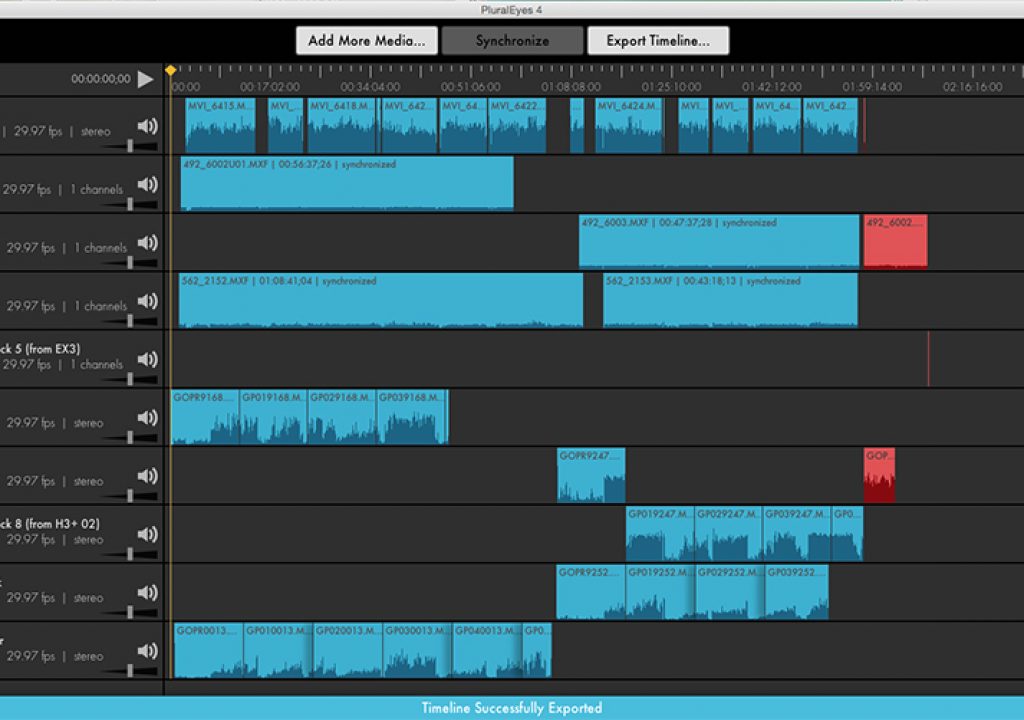

- PLURALEYES 4 TROUBLESHOOTING PRO
- PLURALEYES 4 TROUBLESHOOTING SOFTWARE
- PLURALEYES 4 TROUBLESHOOTING CODE
- PLURALEYES 4 TROUBLESHOOTING SERIES
Especially if you lock of the pan and tilt on your tripod then the interviewee moves and you need to reframe you introduce judder into the shot as you unlock them.

The problem you get with this is camera wobble. But if the interviewee is pretty still I tend to push for F2.8 as it looks so nice. You really wouldn’t want to shoot an interview below F2.8 anyway unless the interviewee is like a statue otherwise you will struggle to keep focus. The F2.8 70-200 mm Canon IS is my lens of choice for this.

I tend to shoot these interviews on a zoom lens, this gives me the freedom the change the size of the shot without stopping and starting as I would have to do with a prime lens. If I needed to have the sound of the interviewer for use then I would use the old trusted technique of tapping them on the shoulder at around the 8-9 minute mark so the next time they ask a question they simply pause and say to interviewee, hang on one sec. There will be very small gaps of black where there is no video that matches the audio from where you pressed stop and then start again on the camera. Pluraleyes will move the video into the correction position on the timeline over the audio. I don’t button on and off for that as there is no need. I also just leave the sound recording on the zoom.
PLURALEYES 4 TROUBLESHOOTING SOFTWARE
Neither he or the interviewee knows I have started a new clip and with the auto syncing software I don’t have to worry about a sync point.
PLURALEYES 4 TROUBLESHOOTING SERIES
With this interview series the director’s voice will not be heard so what I do, when it gets to around 8 or 9 minutes I simply button off and on very quickly whilst he asks a question so there is no interruption. Secondly no sync clap is needed so I can keep the flow of the interview going. Put them on different audio tracks on the same sequence then you simply click sync and as long as the reference audio on the camera is good enough it works!

It compares the audio waveform of the sound recorded on the DSLR to the sound recorded on the zoom.
PLURALEYES 4 TROUBLESHOOTING PRO
The reason being is I use a genius piece of software called Pluraleyes from Singluar Software for Final Cut Pro and Sony Vegas. I want to keep it seamless and this is how I do it.įirst off I do not use a clapperboard…or a clap or any sync point. This is not good for the flow of an interview. Interrupt the interview to stop then do another clapperboard. Now the traditional way would be to do a clapper board at the start of each new clip. The interviews have generally been pretty long and we know the clip limit on these cameras is around 12 minutes, so what you need to do is stop and start the recording before the 12 minutes runs out. I also used a Rode Video Mic on the camera to give me reference audio for syncing. I used the Zoom H4N with a Sony ECM 77 plugged into it. We all know the sound limitations of recording audio on the 7D and I really do recommend recording separate sound. All shot with same look and background and all shot on the Canon7D as we need 25p as the 5dmkII firmware has not come out yet. This documentary has A LOT of interviews in it. Most of the time I have a separate soundo but on this job in Dubai I have been doing the sound myself, although I have an assistant. I haven’t done a huge amount of interviews with them though, certainly not one man band. Nice and simple…it works…īut recently though I have, as you know, been using those HD-DSLRs (or Video DSLRs as I used to call them until everyone started calling them HD-DSLRs!). 99.99% of them with sound recording onto the tape/ card etc of the camcorder. I have shot probably thousands of interviews in my career. How catchy is that for a blog title topic?! Well this blog will say what it says on the tin.
PLURALEYES 4 TROUBLESHOOTING CODE
20% off with discount code "starwars" at checkout


 0 kommentar(er)
0 kommentar(er)
